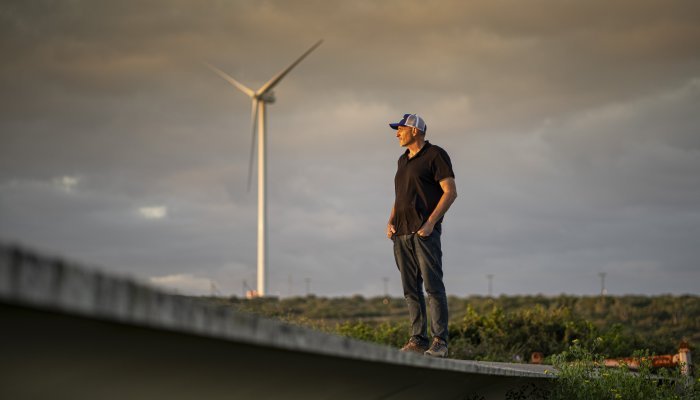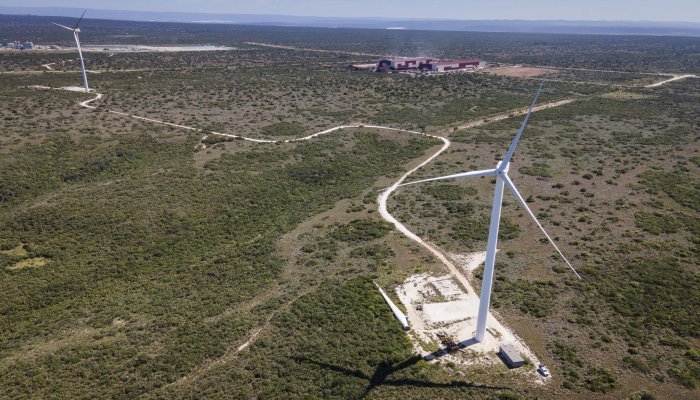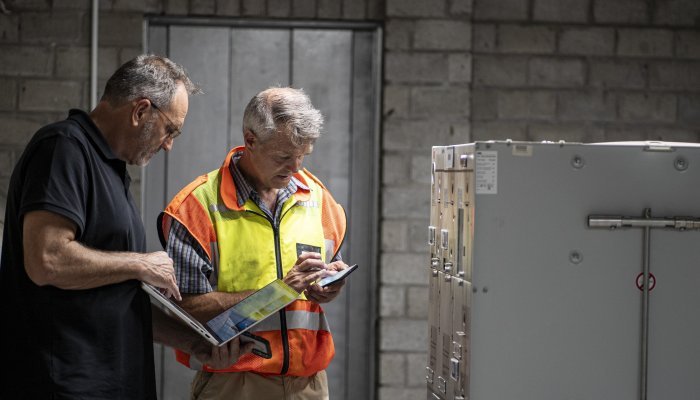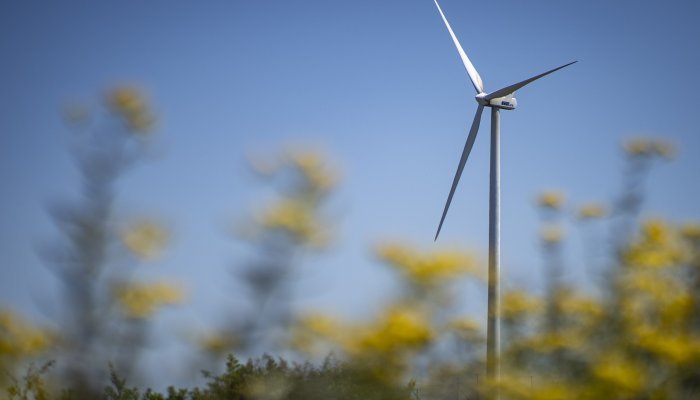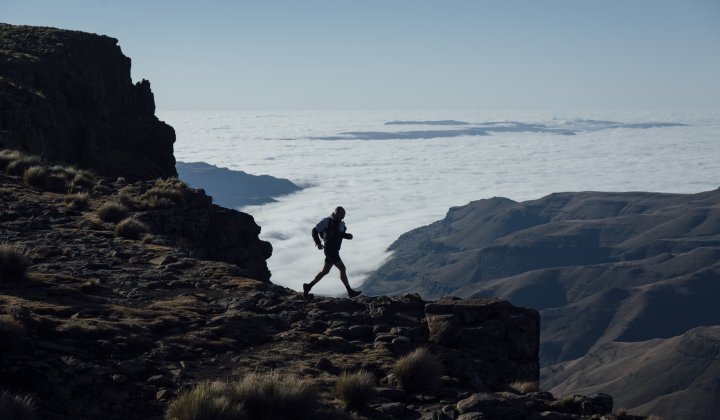On the outskirts of Gqeberha in the Eastern Cape, a vast factory is slowly gathering dust. Situated in the blue-collar suburbs on the edge of the city, this hulking steel building is where one of SA’s original wind power dreams fizzled out like a candle in the proverbial wind.
At the time, national government primarily focused attention on developing REIPPPP, (the renewable energy independent power producer procurement programme), which could have become an extremely successful government initiative. The programme aimed to effectively address energy shortages, reducing the reliance on coal while transitioning to renewable energy.
Rewind to 2012, and you would have found the now-abandoned factory to be a hive of activity, producing high-quality wind towers. Numerous renewable energy projects were set to take off for this industry sector here in the Coega Special Economic Zone, with the promise of a multitude of REIPPPP projects on the horizon.
The company that owned the factory, DCD Wind Towers, had recently completed the assembly of a 2.5MW wind turbine under licence, but a range of challenges await anyone seeking project finance in new industry sectors, and the dream of a locally built and “Proudly South African” turbine was plagued from the start.
Banks declined funding as there was no proven track record, and DCD failed to secure a single order. Then president Jacob Zuma also pushed for nuclear power over renewable options, and the company was forced to shift its focus to producing tower sections for existing foreign wind turbine manufacturers. Clients included global brands such as Vestas and Siemens, and the new market prospects looked bright.
As the REIPPPP programme gained momentum, it saw South Africa overtake other African countries in the renewables field (the country was producing 9 258MW of solar and wind energy by mid-2024). The primary vision was to attract private investment and stimulate economic growth, especially for projects in the renewable energy field that prioritised local content.
A Belgian company, Electrawinds, was also operating in South Africa at the time, and installed its first wind turbine in the Eastern Cape. This Vestas 1.8MW unit was erected at Coega, not far from the original DCD tower factory, but once again various complications forced it to pull out of the market.
This was the time for Avianto Energy to step into the breach. Trevor d’Oliveira and Felix Bielefeld – two engineers with a passion for wind power – had heard about the two lone turbines and saw their opportunity. They made it their personal obsession to secure both the assets and turn them into a viable business proposition.
“It was the start of a long and hard road,” says the Avianto Energy CEO, D’Oliveira. “There were many a day where we seriously questioned our sanity. Nobody saw the 2.5MW turbine as anything but scrap metal, while the operational 1.8MW Vestas unit from Electrawinds was not deemed fundable by banks due to the many unknowns around the PowerX power purchase agreement (PPA) at the time.”
At the time, PowerX was a lone licenced energy trader in an energy field dominated by Eskom, and none of the industry players could fathom how business models for smaller wind power producers could potentially work. “We believed in ourselves – and in the future of private PPAs – to throw caution to the wind (excuse the pun) by bonding other assets,” continues D’Oliveira.
Avianto acquired the operational unit and generation licence, along with an additional site where it planned to erect the scrapped turbine. A mammoth task awaited as it first had to reconstruct the unit from eight containers filled with components, not to mention three massive blades and five tower sections.
“One would think our government would support initiatives such as erecting South Africa’s first locally assembled turbine,” laughs D’Oliveira. “That was not the case.” It took grit and perseverance to get consent from the Department of Energy to allow the National Energy Regulator of South Africa (Nersa) to sign off on the paperwork, but in 2019 construction finally began.
“We all know what happened next in 2020, but in the midst of those utterly crazy Covid years, we forged ahead and managed to successfully complete the project,” says D’Oliveira.
The future of wind power in Africa
Africa, with its vast swathes of unpopulated landscapes and consistent natural wind resources, is primed to become a global leader in the renewable energy playing field. Sluggish uptake by state-run energy corporations means the growth of the booming renewables sector will therefore fall to private players.
Avianto Energy has actively pursued mutually beneficial partnerships with similarly minded institutions since inception, and has forged a strong relationship with ETA Energy Services. Headed by Felix Bielefeld, this wind energy specialist brings both international expertise and a strong focus on southern Africa to the table.
“Our competency centre in Europe combines knowledge from matured markets with the business expertise we’ve built over the past decade in Africa,” says Bielefeld. ETA’s service portfolio includes various independent services, ranging from electro-mechanical installation to advisory and asset management services for owners as well as operators.
The whole world is grappling with the consequences of climate change. The hard facts point to an increase of two degrees Celsius (for most days of 2024) from the pre-industrial mean average established as baseline in the late 1970s, according to the European Centre for Medium-Range Weather Forecasts (ECMWF) data. “We humans have become the frog in the pot, slowly coming to boil over a fire,” says Bielefeld.
Wind power specifically stands out for its potential to provide affordable, reliable, and consistent clean energy, with the key advantage of potential 24-hour generation. The boom of wind farms across the world therefore comes as no surprise, and turbines are now gaining significant traction across the African continent as well.
Prime African movers include South Africa, together with countries such as Egypt, Senegal, and Morocco. Northern Africa may well lead the charge by region, but South Africa is way ahead of the curve, producing 39% of the continent’s wind energy.
The wind industry in Africa started off in Egypt in the late 1980s, but despite being a first adopter, the country now generates only 1.89GW (compared to SA’s 3.4GW). An International Renewable Energy Agency (Irena) research study estimates that secondary markets such as Ethiopia, Tunisia, and Kenya have upped capacity to 9GW by end 2023.
The “‘tip of the iceberg” cliché applies here, as there was a forecast of total 86GW of wind power projects in the pipeline when this ReGlobal report was published in 2023. Egypt looks set to dominate the wind power landscape in the next decade, with a target of 42% of renewable energy usage set for 2030.
Energy supply in the majority of Africa continues to be dominated by hydropower, but this will hamper power supply during extended periods of drought. Rainfall in many of the arid regions is decreasing year on year, not to mention the ongoing issues with the continent’s ageing hydro-electric infrastructure.
Fossil fuels continue to drive some of the heavyweight economies – like South Africa – but wars and rebel activity have made the international gas market so volatile that budgeting has become unpredictable. The only way to balance this out is to invest in renewable energy capacity to mitigate that economic risk.
South Africa’s generation mix is still heavily reliant on coal, but the energy equation is changing every year. Figures for 2022 shows that our installed capacity of 54GW now comprises 3.4GW wind, 2.3GW solar PV, 0.5GW concentrated solar power, 0.6GW hydro, 39.8GW coal and 3.4GW diesel. (www.reglobal.org)
“Wind energy – intricately tied to political power play and available geographic wind resources – remains Africa’s best option to achieve its climate goals and power supply needs,” says Bielefeld. “It is also a given that wind and solar power generation complement each other.”
Experts agree that this combination is the best way to stabilise existing power grids. Solar infrastructure may be cheaper and certainly has a longer operational integrity, but the loss of sunlight for half the day – and whenever rain and cloud cover roll in – plays havoc with energy supply forecasts.
Wind turbines can operate 24/7 to even out these dips, which is a key reason why hybrid projects are at the forefront when clean energy projects need to improve the profile of supply from power plants based on a singular supply source. This is critical in an African context, and many of the major projects commissioned through Avianto Energy and ETA therefore combine solar, wind energy, and electricity storage.
The journey towards clean energy generation is certainly not without its challenges. Exorbitant capital input costs, a failing power grid, a lack of infrastructure in many of the continent’s rural areas, a lack of political will, and bureaucratic hurdles are just a few of the barriers that must be negotiated.
“We understand these obstacles, but the need for growth is too immense to ignore,” says D’Oliveira. “Africa’s growing economies cannot afford to fall further behind their global counterparts and the decreasing costs of the technology linked to wind energy positions it as a key part of the power supply bouquet.”
The environmental aspect is of extreme importance, too, and 223 identified projects – either installed or under construction – account for an estimated $15 billion worth of investment in Africa. In addition, 24.4 million tonnes of CO2 is abated annually, and this is certainly a breath of fresh air.


